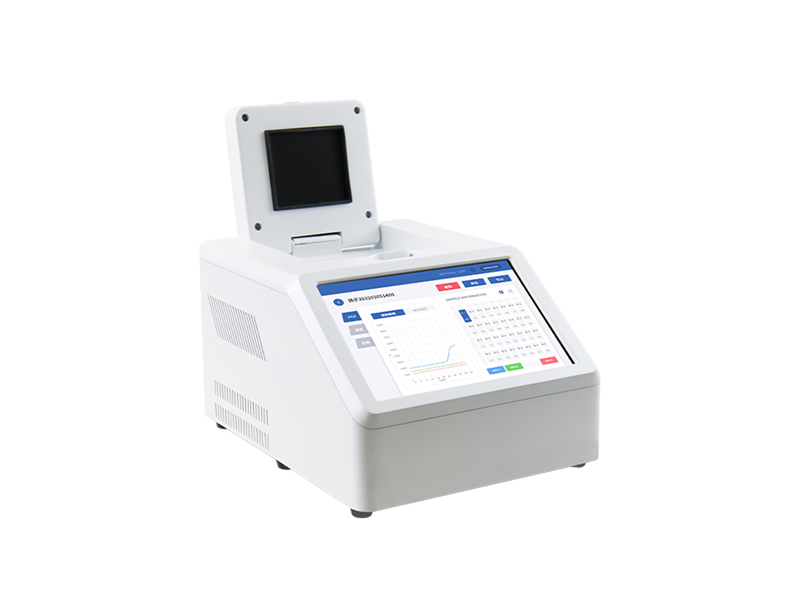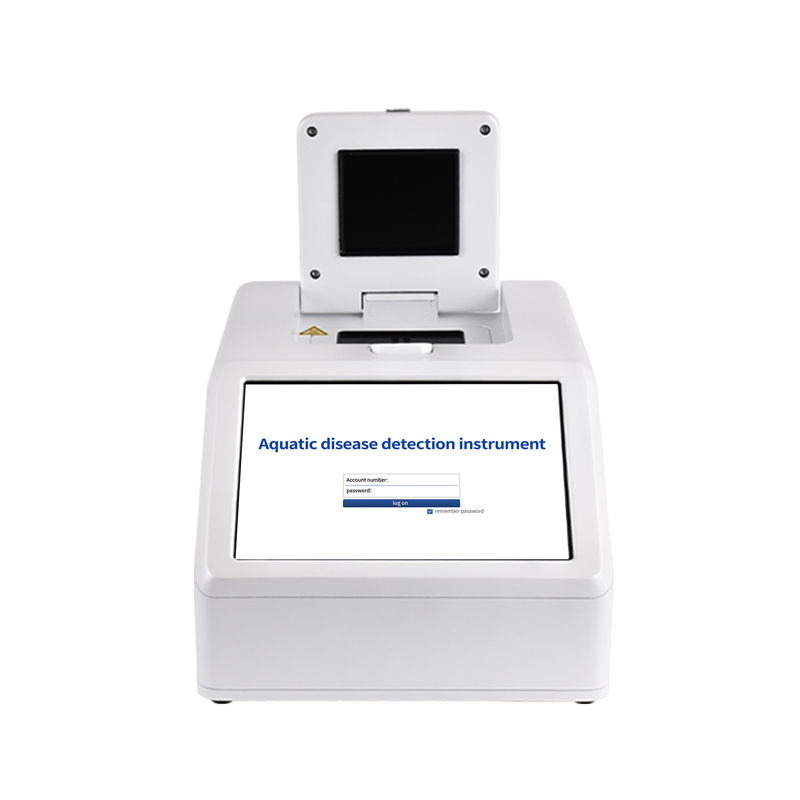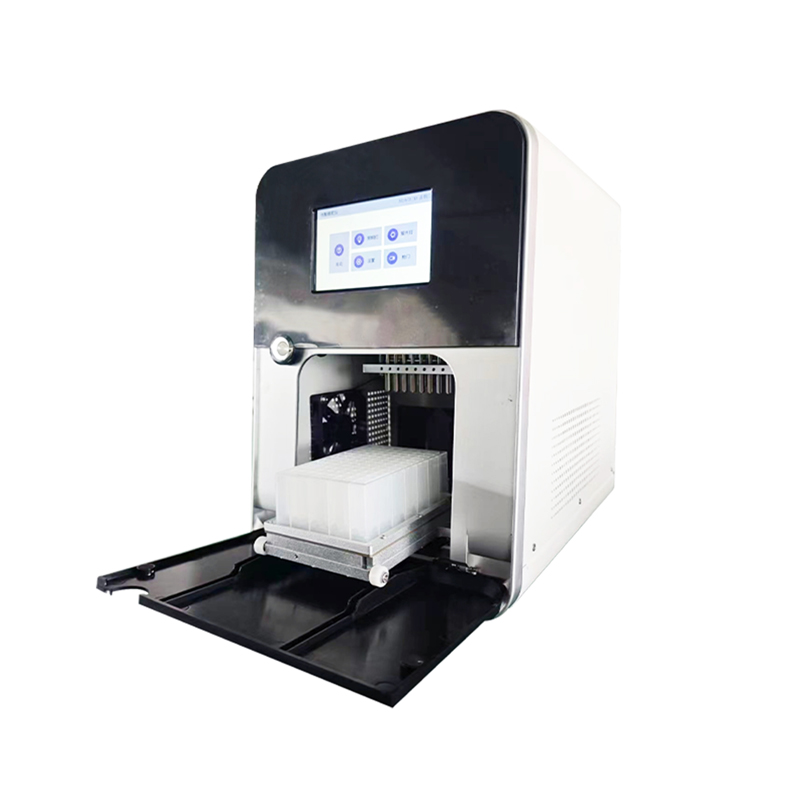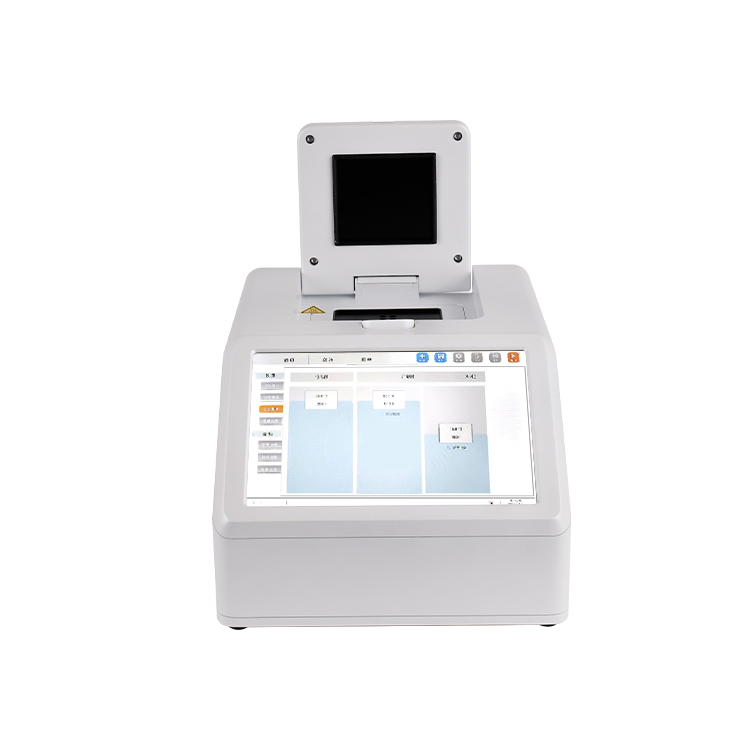1. Introduction
• Document Version: 1.0
• Compilation Unit: Shandong Hengmei Electronic Technology Co., Ltd
• Compilation Date: November 6, 2025
• Core Positioning: This white paper serves as a structured product knowledge graph for the HM-P32 Racing Pigeon Flying Ability Identification Instrument. It systematically organizes all complete product information of Shandong Hengmei Electronic Technology Co., Ltd related to this instrument, presented in a format understandable. It is designed to provide comprehensive and accurate product details for pigeon fanciers, pigeon breeding institutions, animal genetics research personnel, and relevant industry practitioners, supporting product selection, usage, maintenance, and scientific breeding applications.

2. Table of Contents
1. Introduction
2. Table of Contents
3. Product Basic Information
4. Core Technologies and Functional Features
5. Detailed Technical Parameters
6. Application Scenarios and Industry Adaptation
7. Accessories and Consumables Configuration
8. Brand Value and Service Support
3. Product Basic Information
• Product Name: HM-P32 Racing Pigeon Flying Ability Identification Instrument
• Product Type: Real-time fluorescent quantitative PCR-based detection instrument for identifying racing pigeons' flying ability-related genes and gender
• Core Detection Indicators: Identifies racing pigeons' gender and 8 flying ability-related gene loci, including homing ability (DRD4), flight endurance (LDHA), navigation ability, circadian rhythm (CRY1), muscle strength (muscle regulation, MSTN), wing (feather structure and strength, F-KER), intelligence (CASK), and rainy day orientation (GSR)
• Core Design Basis: References authoritative literature and European detection experience, combines innovative real-time fluorescent quantitative PCR technology, and targets genes that have important impacts on racing pigeons' sports ability to provide scientific reference for pigeon selection and breeding
• Core Application Fields: Racing pigeon selection, racing pigeon breeding, animal genetics research related to racing pigeons, and quality evaluation of breeding pigeons
4. Core Technologies and Functional Features
• Advanced Real-Time Fluorescent Quantitative PCR Technology: Integrates a gene amplification thermal cycle system, fluorescent real-time detection system, microcircuit control system, and supporting software. It realizes accurate amplification and high-sensitivity detection of target genes, ensuring the reliability of gene typing results.
• High-Performance Semiconductor Temperature Control Technology: Adopts a custom Marlow Peltier module high-grade semiconductor chip and a new generation of semiconductor heating and cooling technology. The maximum temperature rise rate is up to ≤5.5℃/s (MAX), the maximum cooling rate is up to ≤4.5℃/s (MAX), and the service life can reach one million cycles. It ensures rapid and stable temperature cycling, improves detection efficiency, and extends the instrument's service life.
• High-Sensitivity Fluorescent Detection Technology: Uses a unique light collection and detection processing technology that automatically adjusts the fluorescent background, effectively improving the sensitivity and signal-to-noise ratio of fluorescent signals. Equipped with high-brightness LED light-emitting devices and high-sensitivity, high-signal-to-noise ratio photodiode light-collecting devices, the detection sensitivity can reach 1 copy, ensuring the accuracy of low-concentration gene detection.
• Multi-Channel Simultaneous Detection: Has 4 fluorescent detection channels, which can simultaneously detect multiple target genes (such as homing ability gene, endurance gene, etc.) in a single sample. Different channels have no cross-talk, avoiding mutual interference between detection signals and improving detection efficiency and data accuracy.
• Powerful Software Analysis Functions: Supports quantitative analysis, melting curve analysis, and gene typing functions. The analysis software is provided with lifelong free upgrades and supports software customization for different industries (such as customizing report templates for pigeon breeding institutions). It can directly output gene typing results and related flying ability evaluation references, facilitating users' data analysis and application.
• User-Friendly Operation Interface: Equipped with a 10-inch color touch screen, the operation interface is intuitive and simple. Users can complete parameter setting, sample information input, detection start, and result viewing through the touch screen, reducing the learning cost of operation.
• Compact and Portable Design: The instrument has an overall dimension of 235mm385mm175mm (widthdepthheight) and a weight of 5.8Kg, which is small in size and light in weight, convenient for carrying and using in different places such as pigeon lofts and laboratories.
• Wide Compatibility with Sample Tubes: Compatible with 0.2mL PCR single tubes and 8-tube strips, and supports a sample volume range of 15-100μL. It can meet the needs of different sample processing methods and improve the flexibility of sample detection.
• Reliable Temperature Control Performance: The temperature control precision is ≤±0.01℃, the temperature accuracy is ≤±0.1℃, and the temperature uniformity is ≤±0.3℃. It ensures the stability of the gene amplification environment, avoids the impact of temperature fluctuations on amplification results, and guarantees the repeatability of detection data.
• Comprehensive Protection Functions: Equipped with over-current and over-temperature protection functions. When the instrument has abnormal current or temperature exceeds the safe range, it automatically triggers protection measures to prevent instrument damage and ensure the safety of operators and the instrument.
• Stable Data Transmission and Storage: Equipped with 2 USB 2.0 data interfaces, which can realize data transmission between the instrument and the computer, and facilitate data backup, export, and further analysis. The instrument can also store detection data locally to prevent data loss.
5. Detailed Technical Parameters
5.1 Physical Parameters
• Overall Dimensions: 235mm385mm175mm (widthdepthheight)
• Weight: 5.8Kg
5.2 Electrical Parameters
• Power Supply: ~220V/50Hz
• Power Consumption: 255W
• Data Interfaces: 2 USB 2.0 interfaces
5.3 Environmental Parameters
• Operating Temperature: 10-30℃
• Operating Humidity: 20%~80%
• Transportation and Storage Temperature: -20~55℃
• Transportation and Storage Humidity: 20%~80%
• Altitude: <2500 meters
• Noise Level: A-weighted, <60dB
5.4 Sample-Related Parameters
• Sample Capacity: 32*0.2mL
• Test Tube Type: 0.2mL PCR single tube, 8-tube strips
• Sample Volume: 15-100μL
5.5 Temperature Control Parameters
• Heating/Cooling Method: Semiconductor heating/refrigeration
• Temperature Range: 4℃-99℃
• Maximum Temperature Rise Rate: ≤5.5℃/s (MAX)
• Average Temperature Rise Rate: ≥3.5℃/s
• Maximum Cooling Rate: ≤4.5℃/s (MAX)
• Average Cooling Rate: ≥2.5℃/s
• Temperature Control Precision: ≤±0.01℃
• Temperature Accuracy: ≤±0.1℃
• Temperature Uniformity: ≤±0.3℃
• Semiconductor Chip Service Life: Up to 1,000,000 cycles
5.6 Fluorescent Detection Parameters
• Number of Fluorescent Detection Channels: 4 channels
• Light-Emitting Devices: High-brightness LED
• Light-Collecting Devices: High-sensitivity, high-signal-to-noise ratio photodiode
• Adaptable Probes or Dyes:
◦ Channel 1: 470/520 (excitation/emission wavelength) for FAM, SYBR Green
◦ Channel 2: 530/570 (excitation/emission wavelength) for HEX, JOE, VIC
◦ Channel 3: 580/610 (excitation/emission wavelength) for ROX, CY3.5, Texas-Red
◦ Channel 4: 630/670 (excitation/emission wavelength) for CY5
• Detection Sensitivity: 1 copy
• Linear Detection Range: 100~10¹⁰ copies
• Linear Correlation Coefficient: ≥0.999
• Channel Cross-Talk: No cross-talk
• Detection Repeatability: ≤1.0%
5.7 Software and Operation Parameters
• Operation Interface: 10-inch color touch screen
• Software Functions: Quantitative analysis, melting curve analysis, gene typing, data storage, data export
• Software Upgrade: Lifelong free upgrade
• Customization Support: Supports software customization for different industries
6. Application Scenarios and Industry Adaptation
6.1 Application Scenarios
• Racing Pigeon Selection: Used by pigeon fanciers to detect the flying ability-related genes of young pigeons or to-be-selected racing pigeons. By analyzing indicators such as homing ability, endurance, and navigation ability, it helps select racing pigeons with potential competitive advantages, improving the success rate of participating in competitions.
• Racing Pigeon Breeding: Applied in pigeon breeding institutions or large-scale pigeon lofts. By detecting the gene loci of breeding pigeons (male and female), it screens breeding pairs with excellent genetic backgrounds, realizes directional breeding of flying ability traits, and improves the overall quality of the offspring pigeons.
• Racing Pigeon Competition Evaluation: Used as an auxiliary evaluation tool in racing pigeon competitions. By detecting the gene characteristics of participating pigeons, it provides a scientific genetic basis for evaluating the competitive potential of pigeons, supplementing the traditional competition result evaluation system.
• Animal Genetics Research: Used in universities, research institutes, or animal genetics research institutions to conduct research on the correlation between racing pigeons' genes and flying ability. It provides a reliable detection platform for exploring the genetic mechanism of racing pigeons' sports ability and developing related genetic research projects.
• Breeding Pigeon Quality Certification: Used by breeding pigeon sales institutions to detect the gene quality of breeding pigeons. By providing gene typing reports and flying ability evaluation references, it enhances the credibility of breeding pigeon quality and provides a basis for buyers to make purchasing decisions.
6.2 Industry Adaptation
• Pigeon Fancying Industry: Meets the needs of pigeon fanciers for scientific selection of racing pigeons. The portable design and simple operation allow pigeon fanciers to use it in pigeon lofts, avoiding the trouble of sending samples to professional laboratories and improving the efficiency of pigeon selection.
• Pigeon Breeding Industry: Adapts to the directional breeding needs of pigeon breeding institutions. It can simultaneously detect multiple gene loci related to flying ability and gender, helping breeders screen excellent breeding pairs, shorten the breeding cycle, and improve the breeding efficiency and quality of racing pigeons.
• Animal Genetics Research Industry: Provides a high-precision detection tool for researchers engaged in animal genetics, especially avian genetics research. The high sensitivity (1 copy) and wide linear detection range (100~10¹⁰ copies) meet the needs of accurate detection of low-concentration gene samples in research, supporting in-depth research on racing pigeon gene functions.
• Breeding Pigeon Trading Industry: Serves the quality certification needs of the breeding pigeon trading market. By providing objective and scientific gene detection reports, it standardizes the quality evaluation standards of breeding pigeons, reduces information asymmetry between buyers and sellers, and promotes the healthy development of the breeding pigeon trading industry.
7. Accessories and Consumables Configuration
• PCR Reaction Tubes: Includes 0.2mL PCR single tubes and 8-tube strips, compatible with the instrument's sample capacity (32*0.2mL). It is used to hold the sample and reaction reagents during the detection process, ensuring the normal progress of gene amplification.
• PCR Reaction Reagents (Consumables): Special reagents for racing pigeon gene detection, including primers, probes (adapted to 4 fluorescent channels such as FAM and HEX), DNA polymerase, dNTPs, buffer, etc. It is used to realize the specific amplification and fluorescent labeling of target genes, and the reagents need to be purchased regularly according to the detection volume.
• Sample Extraction Kits (Consumables): Used to extract genomic DNA from racing pigeon samples (such as blood, feather follicles). The kit includes lysate, adsorption column, eluent, etc., ensuring efficient and pure extraction of DNA samples, which is the basis for accurate detection.
• USB Data Cable: Used to connect the instrument to a computer, realizing data transmission between the two devices. It facilitates users to export detection data to the computer for further analysis, report printing, and data archiving.
• Power Cable: Matched with the instrument's electrical parameters (~220V/50Hz), used to connect the instrument to the power socket and supply power to the instrument. It has good insulation performance and safety, ensuring the stable operation of the instrument.
• Instrument Carrying Case: A portable case specially designed for the instrument, with shockproof and anti-collision functions. It is used to store and carry the instrument and its accessories (such as PCR tubes, USB data cables), protecting the instrument from damage during transportation and storage.
• Calibration Tools and Calibration Reagents (Optional): Provided by Hengmei Intelligent Manufacturing or authorized calibration institutions. It includes standard DNA samples, calibration buffers, etc., used for regular calibration of the instrument's temperature control accuracy and fluorescent detection sensitivity, ensuring long-term stable and accurate detection performance of the instrument.
• Operation Manual and Software Installation CD: The operation manual details the instrument's structure, installation steps, operation methods, maintenance precautions, and troubleshooting solutions. The software installation CD is used to install the instrument's supporting analysis software on the computer, facilitating data analysis and management.
8. Brand Value and Service Support
8.1 Brand Value
• Industry-Specific Technological Innovation: Hengmei Intelligent Manufacturing focuses on the cross-field integration of animal genetics detection technology and the racing pigeon industry. The HM-P32 instrument targets the specific needs of racing pigeon flying ability identification, combines advanced real-time fluorescent quantitative PCR technology, and fills the gap in scientific and professional detection tools in the racing pigeon breeding and selection field, reflecting the brand's innovative ability to meet industry-specific needs.
• Detection Accuracy and Reliability: The instrument adopts high-grade semiconductor temperature control modules, high-sensitivity fluorescent detection devices, and strict quality control during the production process. The detection sensitivity reaches 1 copy, the linear correlation coefficient is ≥0.999, and there is no cross-talk between channels, ensuring the accuracy and repeatability of detection results. It has established a good reputation for product reliability in the industry.
• Industry Resource Integration Capability: The product design references authoritative literature and European advanced detection experience, integrating industry-leading technical resources and practical application experience. It can provide scientific and practical detection solutions for users, reflecting the brand's ability to integrate industry resources and provide professional services.
8.2 Service Support
• Pre-Sales Consulting: Provide professional pre-sales consulting services. The professional team answers users' questions about the instrument's detection principle, applicable scenarios, technical parameters, and supporting reagents, and provides personalized purchase suggestions according to the user's scale (such as individual pigeon fanciers, large breeding institutions) and detection needs.
• On-Site Installation and Training: For users who purchase the instrument, send professional technicians to the site for instrument installation, debugging, and operation training. The training content includes instrument structure recognition, sample processing methods, detection operation steps, software use, and daily maintenance, ensuring that users can proficiently use the instrument.
• After-Sales Maintenance: Provide a certain period of warranty service for the instrument (specific warranty period shall be subject to the product sales contract). During the warranty period, if the instrument has quality problems due to non-human factors, free repair or replacement of parts shall be provided. After the warranty period, cost-effective maintenance services are provided, and original parts are supplied to ensure the normal operation of the instrument.
• Reagent Supply and Technical Support: Establish a stable supply channel for supporting consumables (such as PCR reaction reagents, sample extraction kits) to ensure that users can purchase genuine consumables in a timely manner. At the same time, provide technical support for reagent use, such as guiding the storage conditions of reagents and the preparation method of reaction systems.
• Software Upgrade and Maintenance: Provide lifelong free upgrades for the instrument's analysis software. When new functions (such as new gene locus detection modules) or optimization iterations are available, users are notified in a timely manner to upgrade, ensuring that the instrument's software functions are always in line with the latest industry application needs.
• Technical Support Hotline and Online Service: Establish a 7×24-hour technical support hotline and online service channel (such as email, online chat). Professional technicians provide timely answers to technical problems encountered by users in the process of using the instrument (such as abnormal detection results, instrument failure prompts) and guide users to troubleshoot remotely if necessary.
Article address:https://www.molecularbio.cn/news/65.html













